Best
Budget-friendly Speaker
-
Overall: Efficient Class D power amp pumps out high-quality sound
-
Best Feature: State-of-the-art DSP includes room correction, an LCD visual EQ, and more
-
TedScore™: 8.5/10
Best
Active
Speakers
Studio Monitor a compact size
powered monitors
-
Overall: Bi-Amplified with efficient
class D drivers -
Best Feature: Excellent response and
high SPL and Balanced XLR input -
TedScore™: 9/10
Best
High-end
Speaker
Studio Monitor high-end
studio monitors
-
Overall: Integrated TMD
surrounds and dual passive radiators -
Best Feature: Innovative M-shaped
aluminum-magnesium inverted dome tweeter -
TedScore™: 9/10

When I first saw the best music production speakers, I couldn’t believe the difference they made to my mixes. It felt like my ears had been on a diet and suddenly got invited to a sonic feast!
In my cozy home studio, where every inch of space counts, the Genelec 8010A— like the ones toted in a recent roundup— proved that size isn’t everything.
Their crisp, clear output is just magic for those lengthy mixing sessions.
Keep reading because I’ll give you the scoop on some excellent speakers to make your music sound better. You will want to take advantage of this!
Popular Brands and Models
When I think of the best studio monitors, a couple of big names always spring to mind. Let’s take a closer look at them.
Yamaha and KRK Options
Yamaha HS8 8-inch Powered Studio Monitor

Yamaha sets the standard with the HS Series, especially the Yamaha HS8. Offering an impressive frequency range and reliable accuracy, these monitors are an asset in any studio.
Yamaha HS8 8-inch Powered Studio Monitor
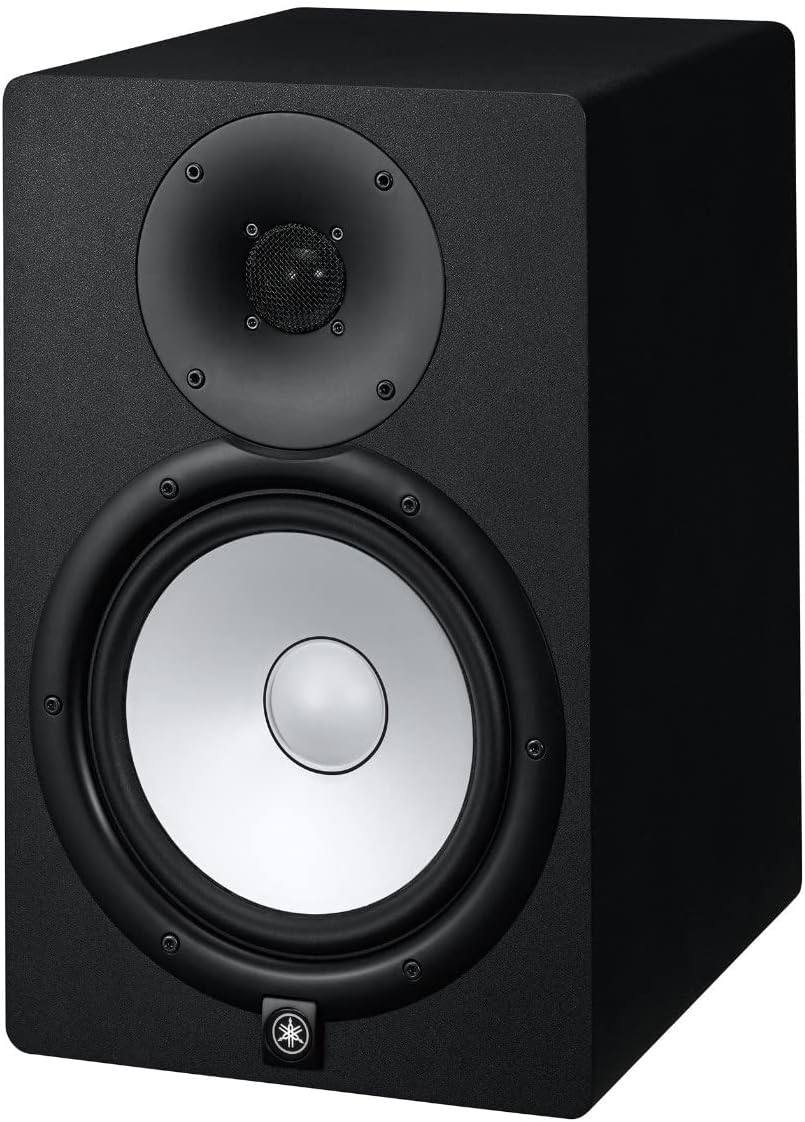
FEATURES: 8-inch active studio monitor and 38Hz - 30kHz frequency response
OTHER INFO: Two-way bass-reflex bi-amplified nearfield monitor
- Room control and high-trim response controls give you optimum response in any room
- Some may find its accurate sound profile lacking in bass for those desiring a more pronounced low-end
When you click ‘Check Price’, you’ll see there are loads of great places to buy this item. Our personal favorite is Sweetwater for the US, and Thomann and Gear4Music for the UK & Europe.
They are the largest music retailers, with excellent customer service, competitive prices, really fast shipping, and the longest guarantees.
The professional musician who wrote this article combined many things,
from the product build, manufacturer’s reputation through to feedback
from other users, to create our famous TedScore™.
KRK RP7 Classic 7" Studio Monitor
KRK, with its iconic Rokit series, is another favorite of mine. They’ve got a punchy low-end that many producers adore, and the built-in EQ adjustments let you fine-tune the sound to your space.
KRK RP7 Classic 7" Studio Monitor, Single

FEATURES: Frequency Range (-10dB): 46Hz - 34.5kHz
OTHER INFO: System Volume: -30 dB - +6 dB
- No-frills, streamlined design
- Great sound quality across various music genres
- Straightforward back panel with easy-to-use knobs for adjustments
- Wide frequency response and impressive low-end performance
- Familiar KRK reliability and iconic design
- Lack of advanced features
- Limited adjustment options
When you click ‘Check Price’, you’ll see there are loads of great places to buy this item. Our personal favorite is Sweetwater for the US, and Thomann and Gear4Music for the UK & Europe.
They are the largest music retailers, with excellent customer service, competitive prices, really fast shipping, and the longest guarantees.
The professional musician who wrote this article combined many things,
from the product build, manufacturer’s reputation through to feedback
from other users, to create our famous TedScore™.
Genelec and High-End Alternatives
Genelec 8010A Powered Studio Monitor
Now, Genelec is where things get genuinely swish. Their Genelec 8010A packs a wallop in a compact size powered monitors with a clarity that’s nothing short of astounding.
Genelec 8010A Powered Studio Monitor

FEATURES: Excellent response and high SPL and Balanced XLR input
OTHER INFO: Bi-Amplified with efficient class D drivers
- Ideal for small studios and travel
- The price of the 8010A model may be higher than similar-sized monitors
When you click ‘Check Price’, you’ll see there are loads of great places to buy this item. Our personal favorite is Sweetwater for the US, and Thomann and Gear4Music for the UK & Europe.
They are the largest music retailers, with excellent customer service, competitive prices, really fast shipping, and the longest guarantees.
The professional musician who wrote this article combined many things,
from the product build, manufacturer’s reputation through to feedback
from other users, to create our famous TedScore™.
Focal Shape 65 Studio Monitor

If you’re diving into high-end studio monitors, take notice of the Focal Shape 65.
They’re known for their detailed soundstage, and the woofer and tweeter combo beautifully brings out the nuances in your mix.
Focal Shape 65 Studio Monitor
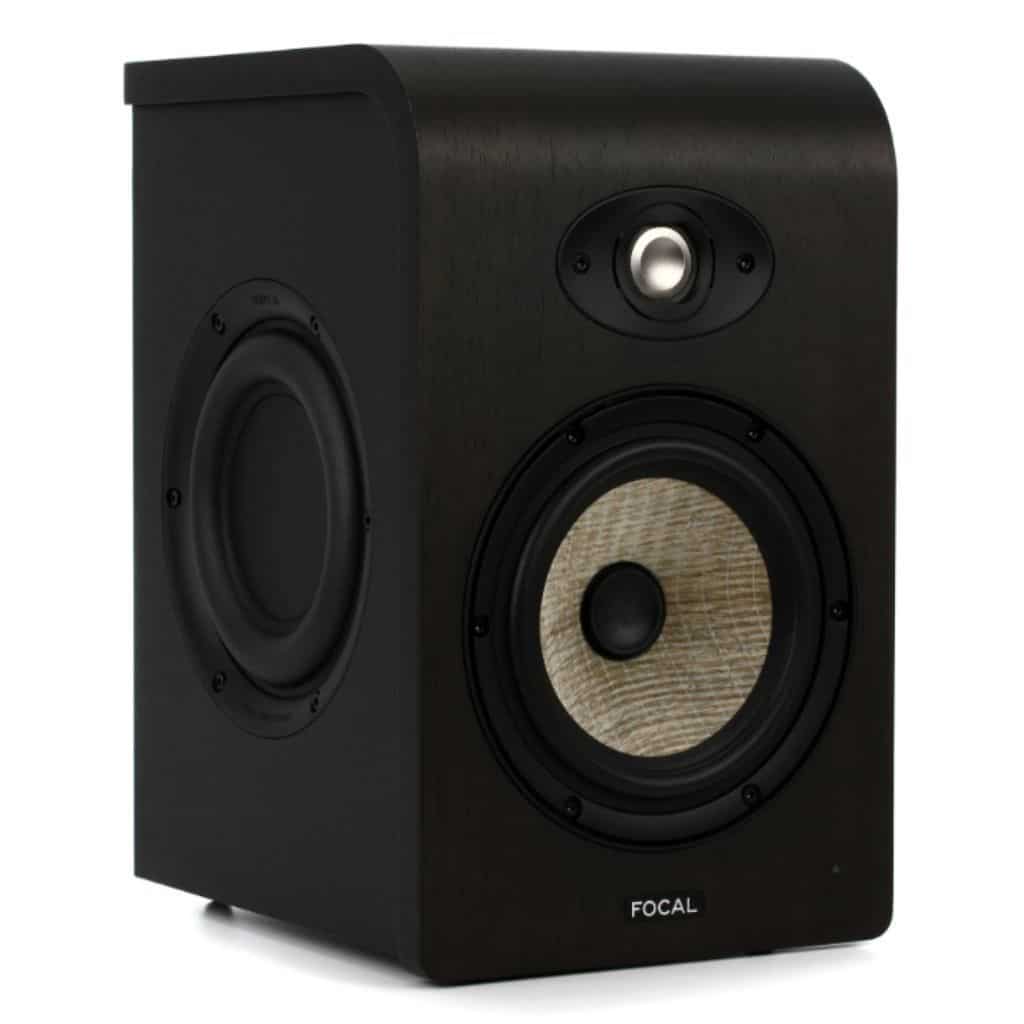
FEATURES: Integrated TMD surrounds and dual passive radiators
OTHER INFO: Innovative M-shaped aluminum-magnesium inverted dome tweeter
- Radiators provide flexible low-frequency tuning and depth
- Affordable nearfield reference monitor with built-in amplification
- Revamped speaker housing provides wide horizontal and vertical dispersion for an extended sweet spot
- The monitors may consume more power than other models
When you click ‘Check Price’, you’ll see there are loads of great places to buy this item. Our personal favorite is Sweetwater for the US, and Thomann and Gear4Music for the UK & Europe.
They are the largest music retailers, with excellent customer service, competitive prices, really fast shipping, and the longest guarantees.
The professional musician who wrote this article combined many things,
from the product build, manufacturer’s reputation through to feedback
from other users, to create our famous TedScore™.
Choosing the Right Studio Monitors
I strike a balance between clear sound quality and a price that won’t have my wallet weeping.
Whether you’re outfitting a cozy home recording space or upgrading your professional studio, getting this choice right is key.
Understanding Specifications

Picking the perfect studio monitor starts with getting cozy with the specs because the nitty-gritty details can make or break your sound.
Frequency response should be broad enough to catch every note you’re throwing down, from the deep growls to the tiptop tings. Trust me, when you’ve got monitors with a wide frequency range, your ears will thank you.
Driver size and speaker configuration are the buddies that decide how well your tune translates into the real world. Monitors with more significant drivers and three-way configurations give you a more accurate bass and a crisper mid-range, ideal for my meticulous editing sessions.
Considering the Size
Now, don’t be fooled—bigger isn’t always better. It’s all about how they fit in my room.
My snug little studio can’t handle those beefy behemoths without the bass bouncing everywhere. But a pair of compact monitors is more my style for a small room, avoiding overpowering volume while keeping my mixes honest.
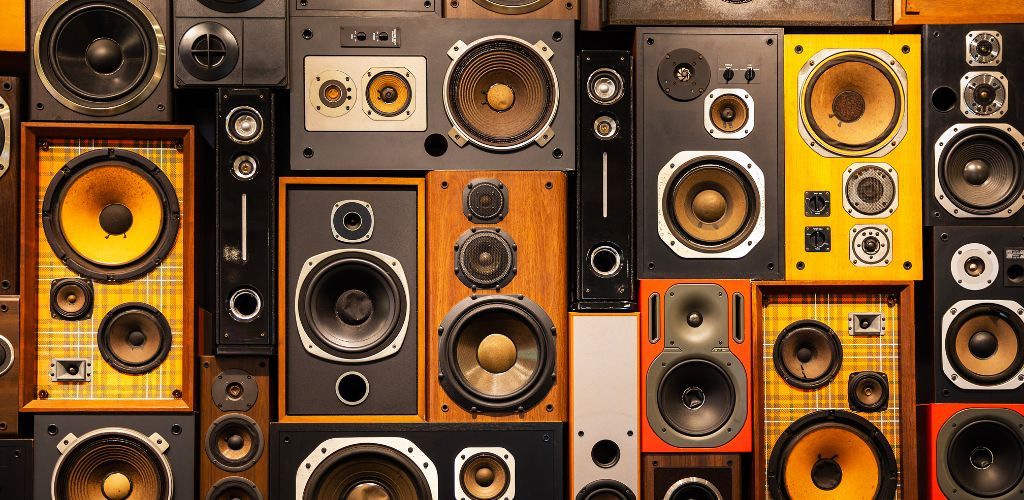
Finding that sweet spot between monitor size and room acoustics means my tracks will sound stellar no matter where you play them.
For those of you with bigger spaces or a bit of a budget for acoustic treatment, you should treat your ears to the clarity of something like the Genelec 8341A. Remember, in the world of studio monitors, there’s a perfect match for everyone.
It’s just a matter of finding yours.
Sound Quality and Frequency Response
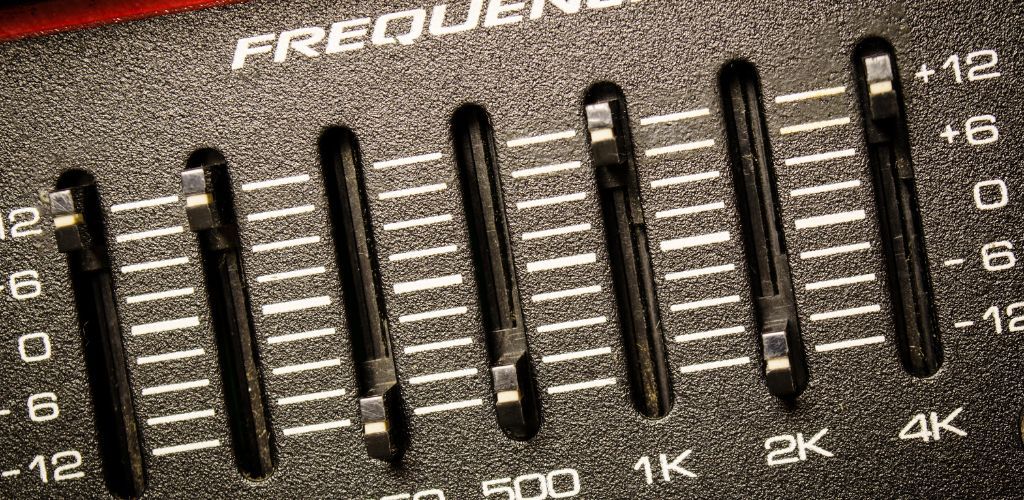
When I look for the perfect studio monitors, sound quality and frequency response are my guiding stars. Let’s explore why these are crucial and how they affect our musical endeavors.
Achieving a Flat Frequency Response
I fancy a flat frequency response because the speakers aren’t adding their flavor to the music. It’s like having a blank canvas, allowing me to paint the sound exactly as I intend to be heard.
The goal here is transparency; what I mix should translate well to other playback systems.
Evaluating Bass Response
A speaker with a stellar bass response gives me goosebumps!
It’s not just about those low-end rumbles but also about how accurately the bass frequencies are represented. When the bass response is tight and accurate to the recording, it’s a sheer delight, making my mixes robust across various listening environments.
The Role of Digital Signal Processing
When I think about crafting the perfect sound, the magic of Digital Signal Processing, or DSP for short, can’t be overstressed. It’s like having a tiny sound engineer inside your speakers, making every note hit the sweet spot.
The Effect of DSP on Accuracy

I’ve seen how DSP works wonders by tweaking the audio precisely and in real time, striving for accurate sound reproduction. No more muffled bass or tinny trebles!
These smart processors fine-tune the frequencies so that what I hear is as close to the original recording as possible— no guesswork, just pure, accurate sound.
Whether it’s a subtle echo in a ballad or the full-bodied boom in a rock anthem, the DSP ensures every detail is heard just as it should be.
Amplification and Volume Control
Before we leap into the technical bits, here’s a friendly heads-up: understanding amplification and volume control is crucial for getting the most bang for your buck with your studio speakers.
It’s about ensuring your mixes are crisp and clean without the drama of distortion.
Understanding Power Rating

When I peek at the back of my studio monitors, I’m always on the lookout for the power rating, which tells me how much oomph the amplifier can deliver.
An ample power rating means I can crank it up without any nasty breakup, keeping my sound nice and smooth.
A higher power rating can mean better headroom for dynamic tracks. I like to think of headroom as a safety net, giving me peace of mind that my music won’t morph into a distorted mess when the chorus hits its peak.
Headroom and Distortion
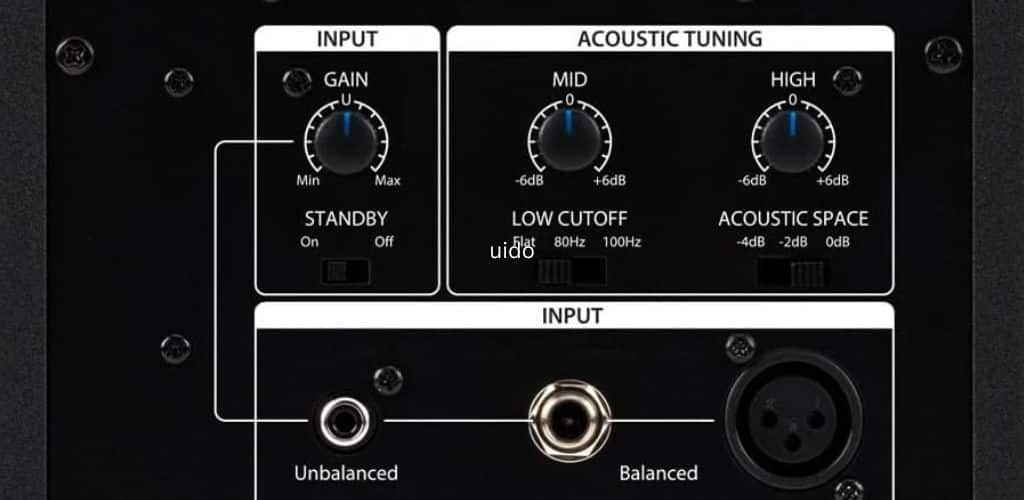
Speaking of headroom, isn’t it just the best when you’ve got enough space to let your tunes breathe?
It means I can push the levels a bit without fearing the crackle of distortion. I always aim for that sweet spot where my tracks can jump and dance without being clipped at the knees.
Meanwhile, distortion is like that uninvited guest who crashes the party in your music. If I push my speakers too hard without enough headroom, distortion sweeps in and fuzzes up my sound.
That’s a surefire way to make my ears unhappy, so I always keep an eye on that balance.
Speaker Components:
Woofers and Tweeters
I always consider the woofer and tweeter design.
The woofer is the component that reproduces the lower frequencies of bass sounds, giving you that lovely, warm thump in your chest.
High-end models tend to have large, well-crafted woofers that can handle deep bass without distorting.
Now, let’s remember the tweeters – they’re the unsung heroes that deliver the crisp, high notes.
These little guys are pivotal for producing those sharp, sibilant sounds and the detailed top end of your tracks. Perfect pairing between woofers and tweeters is essential; it ensures my tunes are seamless across the frequency spectrum.
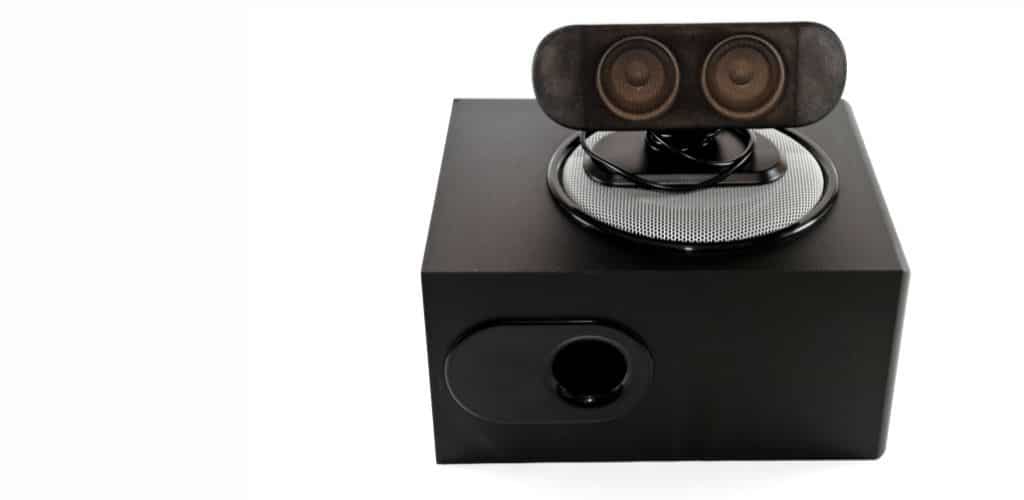
But here’s where it gets a tad more specialized—passive radiators.
Passive radiators work with woofers to enhance the bass response, especially in compact monitors where space is at a premium.
They don’t emit sound from an electrical signal but instead vibrate sympathetically with the woofer, which means I get more bass without needing a subwoofer the size of a small car.
Speaking of size, compact monitors are quite the marvel.
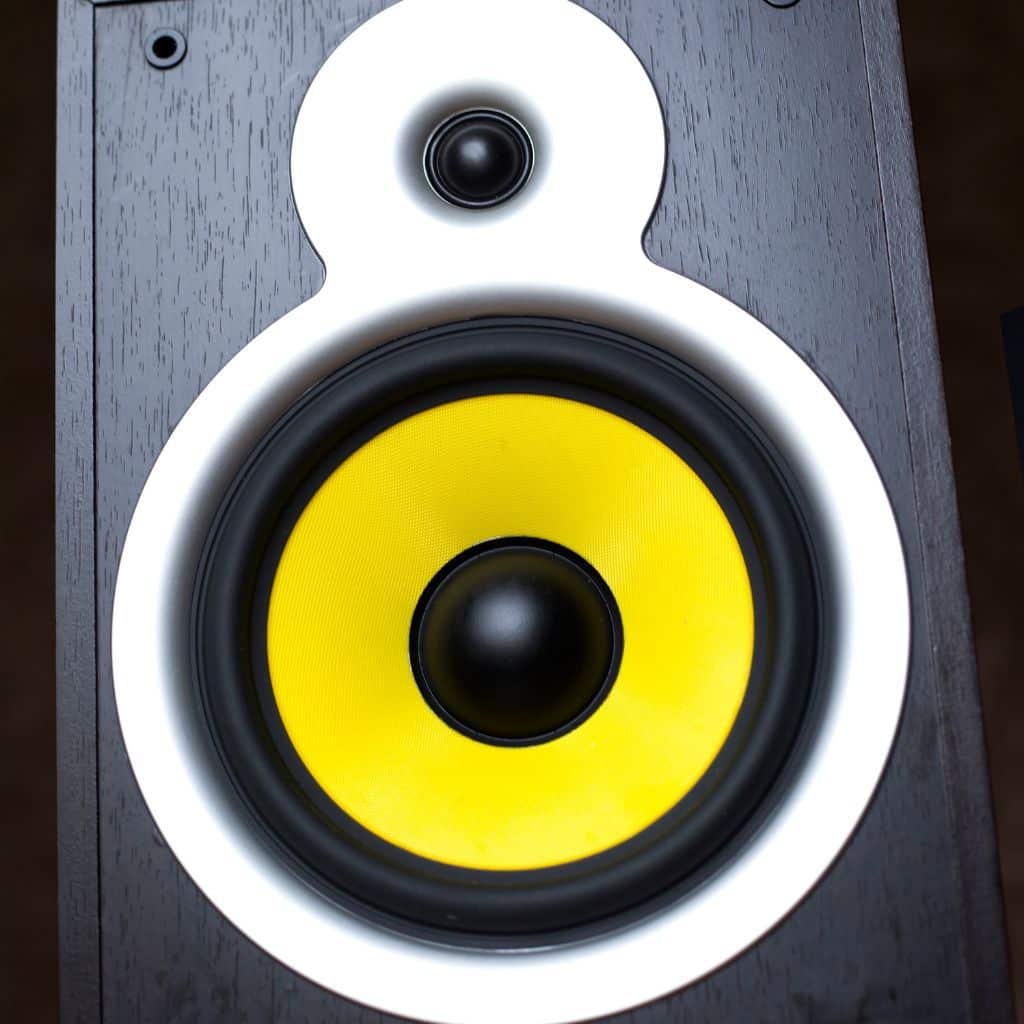
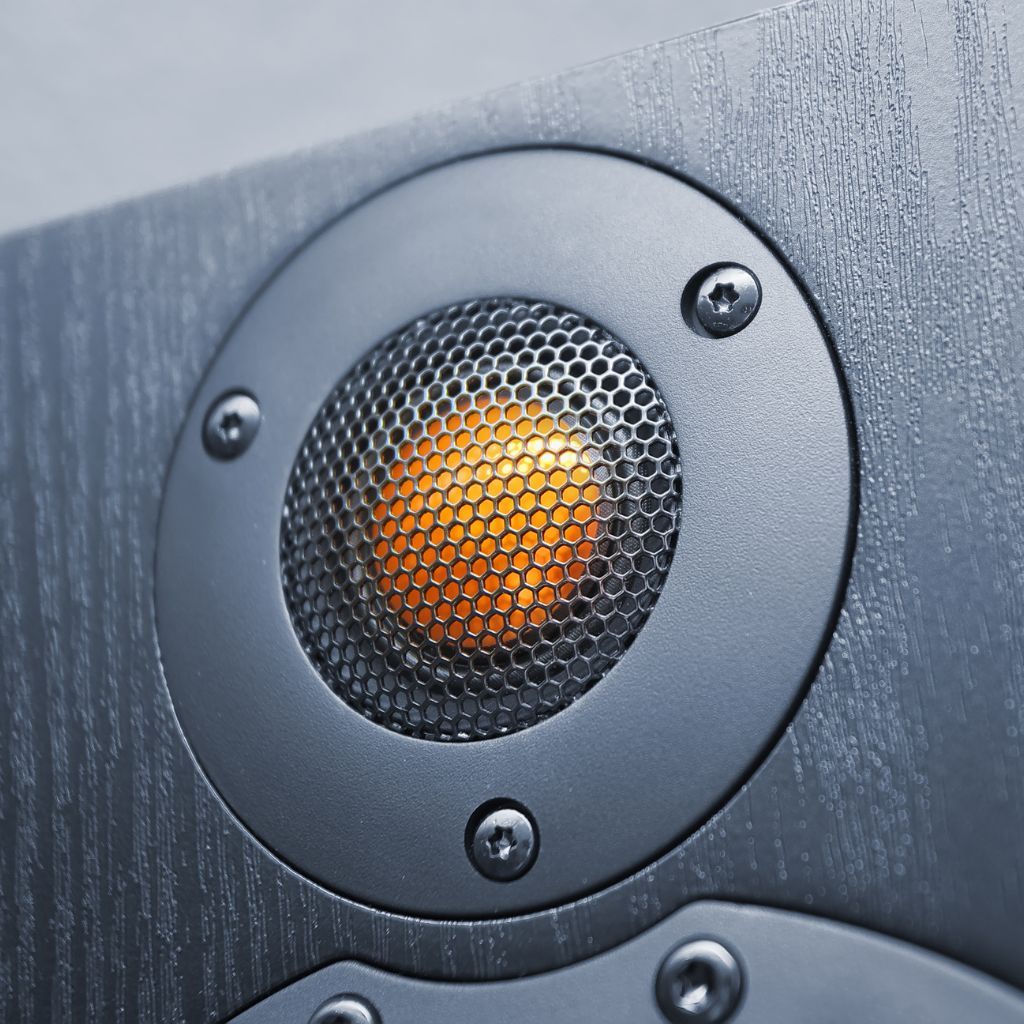
They include woofers and tweeters in a neat package that fits snugly in a tighter studio space. Since I like my studio to be cozy and efficient, having these compact beauties with punchy bass and crystal-clear highs is nothing short of magical.
In conclusion, understanding woofers and tweeters is like getting to know the bread and butter of your music production setup.
They make sure your sonic creations sound ace, from the ground-shaking lows to the sky-high trebles.
Comparing Monitor Types
When eyeing the perfect setup for music production, I can’t help but get excited about the nitty-gritty of monitor speakers.
It’s critical to distinguish the different types, particularly when comparing passive versus active monitors, as it all boils down to their unique features and how they fit into my sonic endeavors.
Passive vs Active Monitors
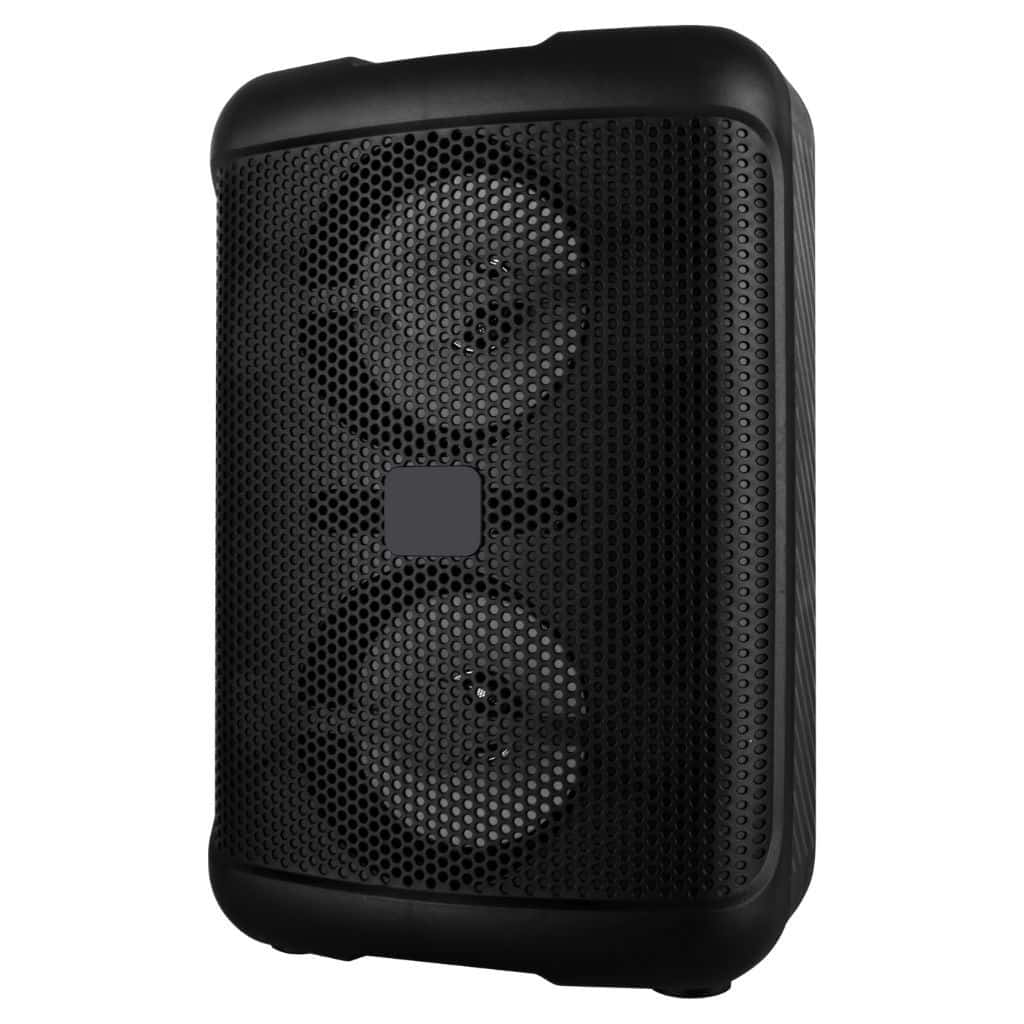
Let me tell you about active monitors, an all-in-one feast for a music producer.
Each speaker contains built-in amplifiers explicitly tailored for the speaker’s drivers, which means they’re primed and ready to go straight out of the box. There is no need for an external amp.

On the flip side, passive monitors are like a ‘bring your own bottle’ affair. They require a separate amplifier to do their thing, which adds a layer of customization – I get to mix and match amps to find the perfect sonic flavor for my tunes.
Stepping into the realm of regular speakers is like swapping a chef’s knife for a Swiss Army knife—they’re versatile but not designed for the precision slicing and dicing of audio frequencies that studio monitors offer.

Regular speakers often excite the bass or treble for a more ‘flavored’ listening experience, while studio monitors aim for accuracy, giving me the genuine taste of my mix.
In essence, it’s all about context. If I want to fine-tune my music and hear it the way it’s meant to sound, I’d go for an active studio monitor.
But if I’m feeling adventurous and have a knack for technical setups, a passive monitor configuration could be my playground.
Just remember, regular speakers might leave my productions seasoned with too much salt and pepper for accurate mixing.
Stereo Imaging and Room Acoustics

When mixing down a track, getting the stereo imaging just right can make my mix pop. It’s all about placing elements within a three-dimensional space to create a realistic and immersive sound.
Stereo imaging isn’t simply a fancy term; it helps convey movement, depth, and energy in my music.
It’s a pivotal aspect of producing tracks that stand out. I need to imagine the mix as a stage and decide where each instrument sits, considering both the left-to-right spread and how far back they seem in the mix.
Room acoustics play a cheeky role in this process, too.
Good acoustics can enhance the accurate representation of stereo imaging, allowing me to make more informed decisions about panning and levels. Treating my studio room helps avoid false impressions of the stereo field caused by reflections and standing waves.
I’m also aware that graphic EQ can affect the perception of space in a mix.
It allows me to tweak the frequencies of my tracks so that each instrument can find its sweet spot without muddling the soundscape. It’s like giving each sound its cozy nook in the stereo image.
Lastly, it’s worth mentioning that a solid pair of studio monitors is crucial.
They bring my meticulous attention to stereo imaging to life, ensuring that what I hear is what others will listen to, too. It all comes together to help me produce music that feels alive and ready to leap out of the speakers!
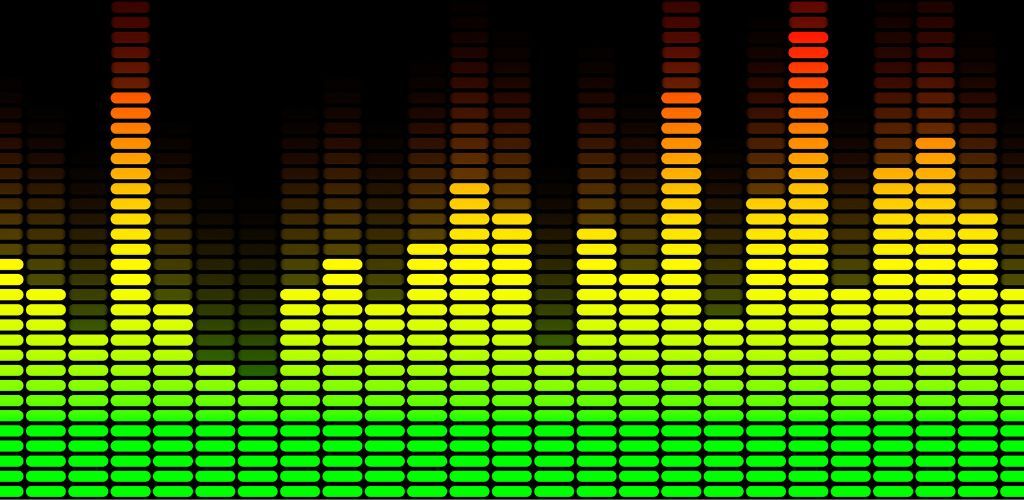
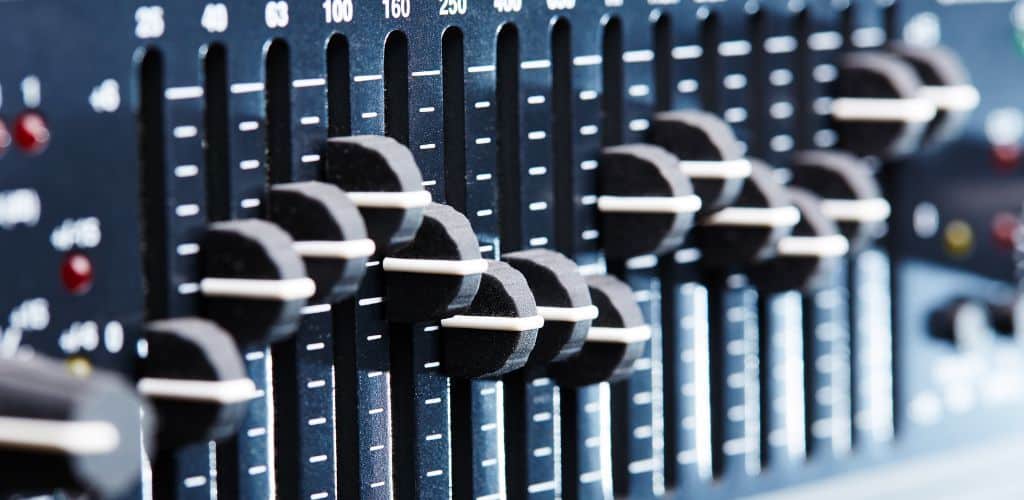
Setting Up Your Speakers for Optimal Performance
I always focus on proper positioning and isolation when setting up speakers for my music production. It’s crucial to squeeze every quality out of my speakers for exceptional performance.
Positioning

Precise speaker placement can significantly improve my listening experience. It’s not just about putting speakers on a shelf and hoping for the best!
Speakers should never be tucked away in corners or tight spaces; that’s a no-go area for sound clarity.
Bass frequencies are notorious for mucking about in corners, so those spaces are better left for bass traps. Positioning my speakers at an equal distance from each other and from my listening point forms an equilateral triangle, vital for a sweet spot.
The front speakers should be angled slightly towards my seated position, creating an immersive soundstage. If I’m about 9-12 feet from the screen, the distance between them should be more than 9 feet.
Isolation
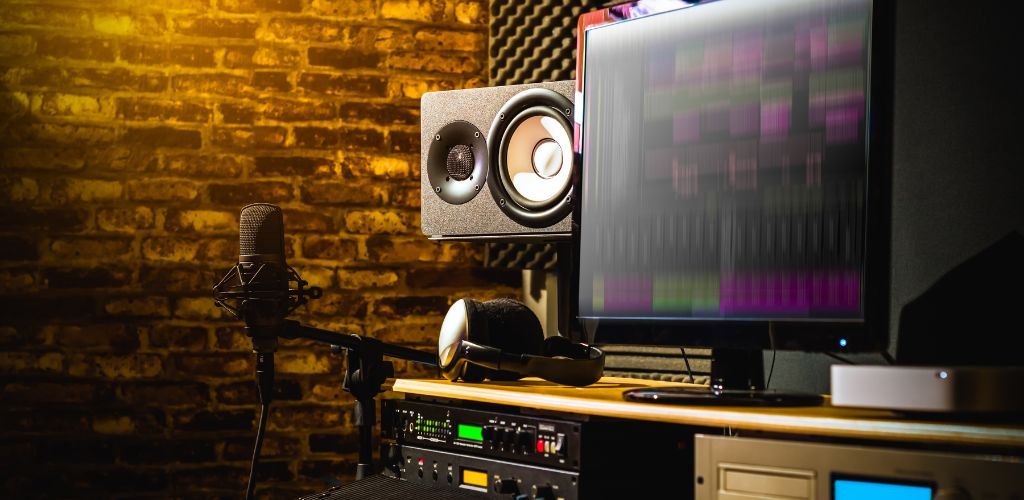
Now, isolation isn’t about being alone with my music—though that does sound nice; it’s about keeping my speakers from transferring vibrations elsewhere.
Nasty little rumbles can muddle up my sound if I let my speakers sit directly on a desk or stand.
Using isolation pads, or iso-pods, helps combat these pesky vibrations.
The pads create a buffer between the speaker and whatever it’s resting on, ensuring I get the cleanest sound. They improve my speakers’ bass response and sharpen stereo imaging, which is brilliant for precise mixing.
This setup is not rocket science, but the difference it makes is stark. With my speakers positioned and isolated correctly, I’m all set to make quality recordings that sound truly phenomenal.
Practical Mixing and Mastering Tips
When mixing, my primary goal is to create a balanced soundscape.
I always start with the volume levels, ensuring each element sits nicely in the mix. EQ is my best mate in carving out space for each instrument. I use it to boost or cut frequencies and avoid muddiness.
Compression is crucial for maintaining consistent levels. Don’t overdo it, though; I aim for a natural sound, especially on vocals.
For mastery in mastering, I respect the testing phase, which is often neglected by eager ears. I listen to my mixes on various speakers and devices to ensure consistency.
Panning gives each sound its place in the stereo field. It helps me avoid a cluttered mix, making each track shine.


When I’m producing music, I always check my headroom. Keeping some space prevents distortion when mastering.
Limiters are my final guardians in mastering, ensuring the mix is loud enough without clipping.
A well-mastered track stands out, so I pay close attention to the final EQ tweaks and compression. It’s the polish that makes the song ready for the world.
And remember, ears get tired, so I take breaks to keep them fresh!
Every mix and master is a journey, and I love learning new tricks. Whether tidying up the low-end or giving the highs some sparkle, it’s all about bringing out the best in the music.
FAQs and Buying Advice
Searching for the best speakers for music production is an investment in the clarity and quality of my audio work. I’m here to clarify common queries and offer straightforward buying advice.
Understanding the Investment
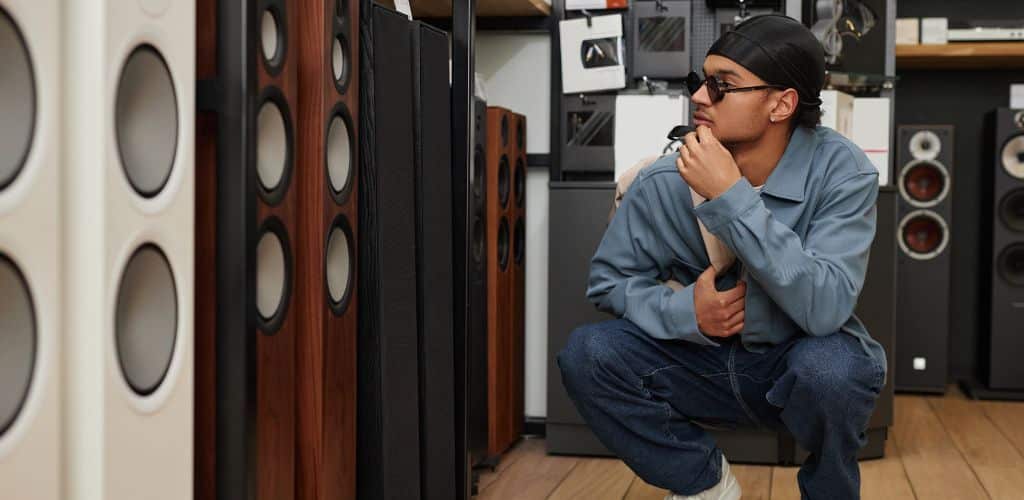
When buying studio monitors, it’s important to consider whether you prefer passive speakers that require a separate external amplifier or active near-field monitors with built-in amplification. Passive speakers offer flexibility in choosing amplifiers but require careful matching for optimal performance.
On the other hand, nearfield monitors with integrated amplification can simplify setup and are often preferred for smaller studio spaces.
Understanding the advantages and trade-offs of each option is crucial in making an informed decision when investing in studio monitors for your setup.
Addressing Common Queries
Yamaha HS5: Superb clarity at a reasonable price, essential for mixing and mastering tasks.
Dynaudio LYD 7: Offers excellent value for money with versatile and precise sound reproduction.
Absolutely! But here’s the rub: while reviews can guide me, my taste and the acoustic traits of my workspace should have the final say.
That’s a tricky question. Sometimes, shelling out more money can fetch me better quality, but it’s not a hard-and-fast rule— it’s all about the bang for my buck.
‘The best’ means the pair that offers the most accurate sound reproduction for my space and budget. What’s best for me might not be the bees’ knees for someone else.
Remember, chums, finding the perfect studio monitors is like hunting for treasure. It requires patience, but it’s pure gold for my music production efforts once I find that perfect pair.

Best Music Production Speakers:
Briefing

It’s been quite the journey exploring these sonic marvels!
The KRK RP7 Classic 7″ Studio Monitor boasts impressive accuracy for its price. If your mix sounds splendid on these, it’ll shine anywhere.
The Genelec 8010A Powered Studio Monitor has always been on my attention; its robustness is splendid for value-seekers like me. It’s designed for precision, making the mixing process a breeze— like having a trustworthy mate in the studio.
I cannot skip the Focal Shape 65 Studio Monitor— its mention in various circles is a testament to its quality. It’s touted as ideal for music production, making it a friend worthy of any home studio.
Selecting the right speaker is as much about trust as quality.
This is a concise roundup of some of the best speakers for making music as of 2024. It will help you pick a companion for your musical endeavors.
Remember, the right set can elevate your production from good to stunningly fantastic.
Wait! There’s more…
Check out this article on cheap studio monitors for budget-friendly options that don’t compromise on quality. It’s a great resource for finding cost-effective studio monitors without sacrificing performance.
FAQ's
The best speakers for making music are studio monitors known for their accurate sound reproduction, such as the Yamaha HS8, KRK Rokit series, Adam Audio A7X, and Genelec 8030C. These monitors are favored for their flat frequency response and detailed sound reproduction, making them suitable for critical listening and mixing tasks in music production.
Music producers typically use studio monitor speakers for accurate sound reproduction, such as models from brands like Yamaha, KRK, Adam Audio, Genelec, and Focal. These speakers are chosen for their flat frequency response and detailed sound reproduction, essential for critical listening, mixing, and mastering tasks in music production. Additionally, high-quality headphones are also commonly used for monitoring and mixing purposes.
When choosing a speaker for music production, consider factors such as frequency response, accuracy, and overall sound quality. Look for studio monitors with a flat frequency response to ensure accurate audio reproduction. Consider the size of your studio space and the power requirements of the speakers.
Professional recording studios commonly utilize high-quality stereo monitors from brands like Yamaha, KRK, Genelec, Adam Audio, and Focal, which are known for their accurate sound reproduction. These speakers are essential for critical listening, mixing, and mastering tasks in the studio environment. Additionally, nearfield and midfield monitors may be used to ensure optimal sound monitoring and mixing capabilities.



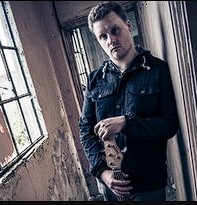






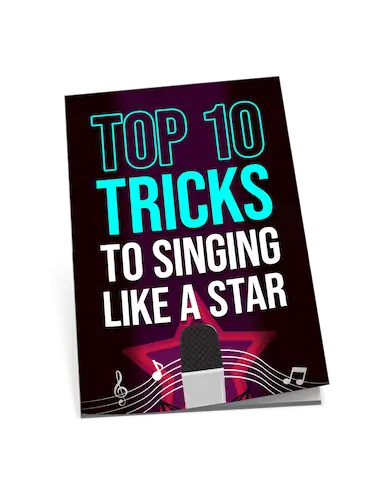
Genelec? More like Genie-in-a-bottle cause it’s magic how they sound! 😂
In the section discussing amplification and volume control, there seems to be a slight oversimplification regarding power rating and its effects on headroom and distortion. It’s critical to factor in the efficiency of the speaker’s design and the listener’s environment. While headroom is indeed key to preventing distortion, we must also consider the signal-to-noise ratio, especially in project studios where background noise can be a significant issue. This aspect wasn’t fully elaborated on, which could lead to misunderstandings among readers less familiar with audio engineering concepts.
Love how you broke down DSP and its benefits, cleared up a lot for me, really appreciate the insights!
hey Hugh Richardson, super article! just wondering if the yamaha hs8 would be overkill for a small home studio or should i consider something smaller? really struggling with this choice, thanks man
MikeyB, I found the HS8 works great even in smaller spaces if you manage your acoustics well. Don’t let size deter you!